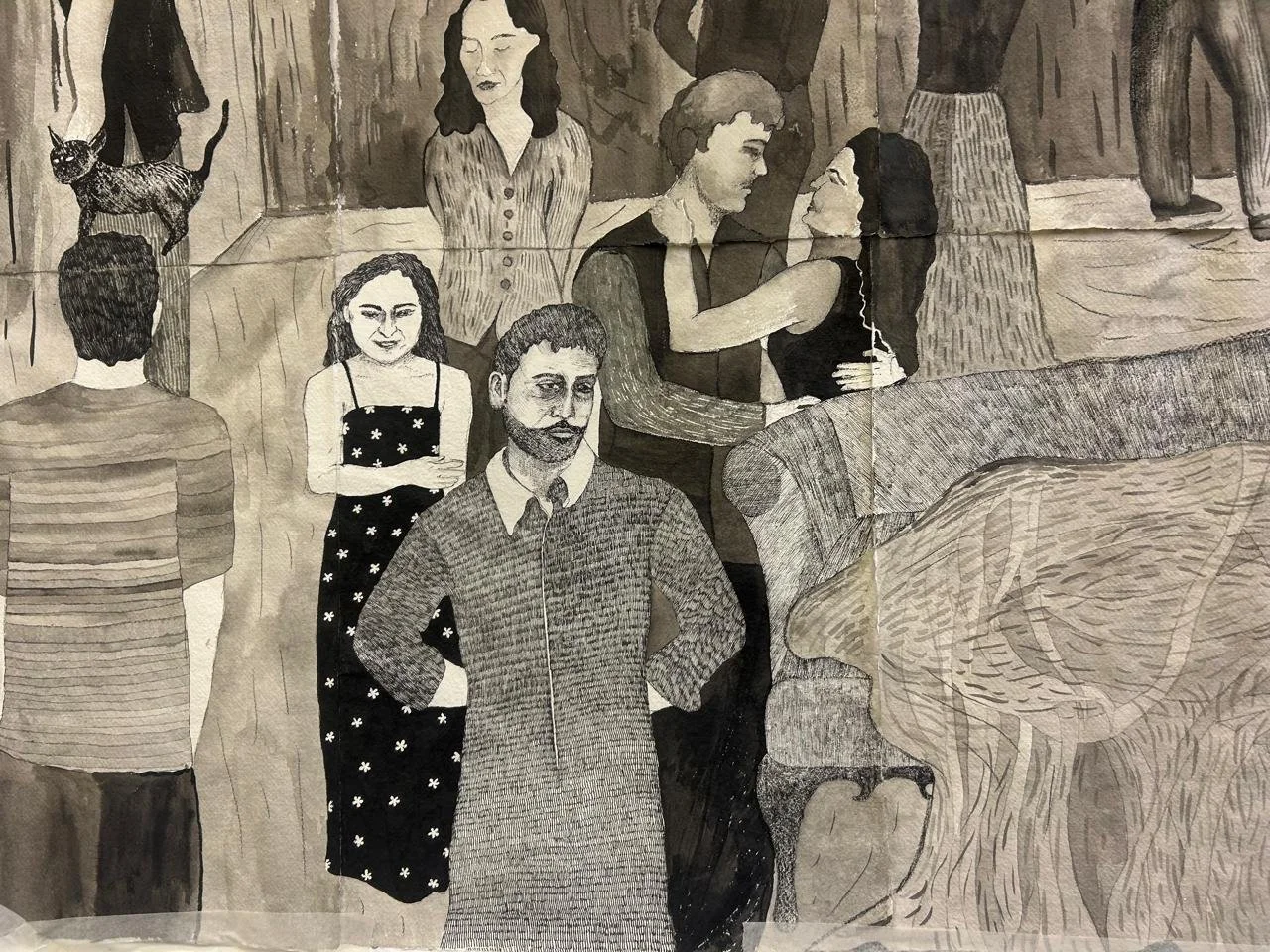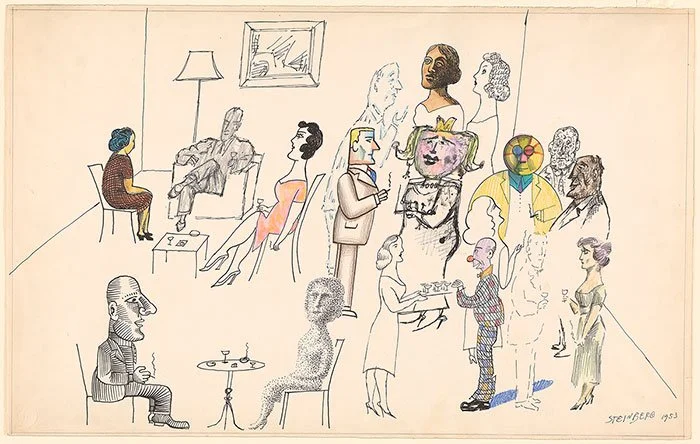I. Catherine Anyango Grunewald
In a recent reading group with Geraint Evans, we discussed the works of Gerhard Richter and Catherine Anyango Grunewald—two artists from very different backgrounds and times, yet both using found media to respond to violent events in history.
Detail from “The Afterparty,” 2024 by Saanthia Bulchandani
What particularly stood out to me was Catherine’s talk on “invisible storytelling,” where she framed the artist’s role as one that involves organizing information, reframing histories, and often undoing rather than creating. She explained that layout plays a crucial role when organizing information visually. She showed us the work of Saul Steinberg, pointing out how his use of different techniques on different characters in his drawings conveys multiple narratives within one composition.
I tried something similar in my latest work, The Afterparty, where I focused on more detailed rendering for some characters, while others were less developed. For the background, I painted loosely and quickly to evoke movement, while the foreground subjects were treated with slow, repetitive strokes to create a sense of monotony and stillness.
Saul Steinberg, “Techniques at a Party I”
Catherine also discussed how the stories we are told about the world shape how we remember it. To challenge existing narratives, she gave more space to the marginalized characters in The Heart of Darkness, limiting the amount of paper she used for the colonizers. The size of the characters on the page became a subtle commentary on their perceived value and importance.
Finally, Catherine’s approach to materials and materiality resonated deeply with me. She turned to abstraction to convey the breakdown of order, using pencil pressure to distort the paper, revealing its fragility and strength simultaneously. She also highlighted the significance of using pencil and paper—not just as tools for making art, but also as objects tied to bureaucracy.


